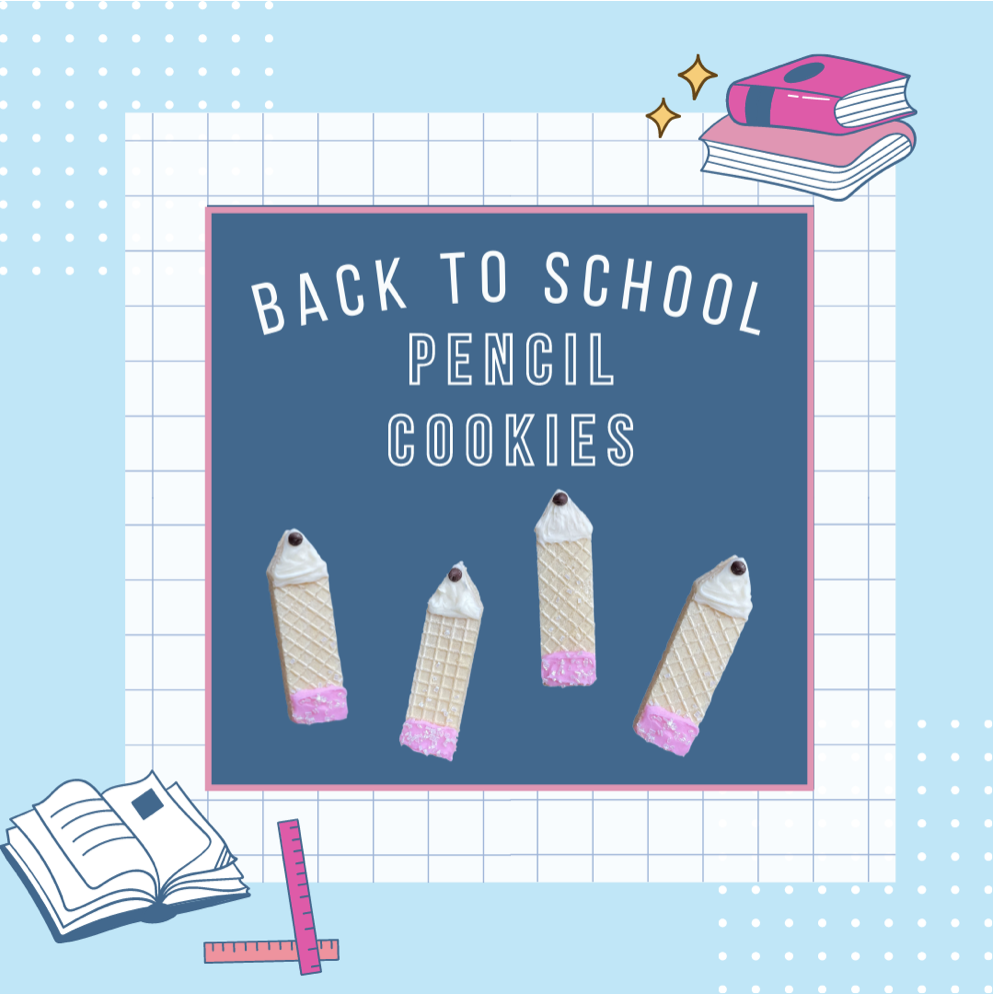School is back in session! After a long school day, coming home to a yummy after-school treat is the best!
Cooking and baking provide a multitude of speech and language opportunities. They can be used to stimulate vocabulary or to work on direct skills a child may have difficulty with, such as following directions or specific speech sounds. Not only are these activities wonderful for development, they are FUN! Children are able to be creative, get messy, bond with family members and have a sweet treat waiting at the end! What could be better than that?
Today we are sharing back to school Pencil Cookies. We found inspiration from @kristensellentin who showcased this adorable cookie idea. Her creative design, paired with OWLS Therapy speech and language ideas sprinkled in provide families with the ultimate cookie activity!
Items needed:
Vanilla wafers
White Icing
Pink Icing
Sprinkles of choice
Mini chocolate chips
Food dye (optional)
Knife
Place the vanilla wafer on a smooth surface. Pick an end of the cookie that will be the pencil’s “point”. Once determined, cut the end of the cookie on both sides. This cut should be at an angle to make the tip a triangle shape.
Ice the triangle, or the “point” of the pencil, with white icing. Place a mini chocolate chip at the tip. This will look like the “lead” of the pencil.
Move to the other end of the cookie. This end will be the pencil’s “eraser”. Ice the end with pink icing to create the desired eraser size.
Sprinkle sprinkles of any color or shape on the eraser as an additional design!
Optional Step:
Have a child that loves color? Make “colored pencils” out of the cookies! Use the food coloring to dye the white icing. Children can get creative with color combinations or create enough colors to look like a Crayola colored pencil box!
Ways to incorporate speech and language skills:
Print out the above directions and read the steps aloud. Moving step-by-step, have the child follow independently to work on listening skills.
Make a sample cookie together. Then, have the child attempt to make a cookie by themselves! This works on recalling items, sequencing tasks, and promotes greater independence.
Have the child recreate their own cookie instructions. Encourage the child to write instructions in complete sentences and include descriptive words, such as colors or shapes. If the child does not yet write, have them draw the steps out in the correct order!
Ask the child a variety of yes/no or wh-questions while decorating. These questions could include:
Yes/no preference questions, such as: “Do you want star sprinkles?”
Yes/no labeling questions, such as: “Do we need a shoe to make cookies?”, “Did we use icing in our recipe?”
Wh-questions, such as: “What is your favorite part of the cookie?”, “Where did we make the cookies?”
Lay out the ingredients. Have the child identify their speech sounds within the ingredients. For example, if the child is working on their “s” sound, they may identify their sound in “wafers”, “sprinkles”, “icing”, and “pencil”!
Use the food coloring to dye the icing different colors. Have the child work on requesting a desired color, labeling colors or identifying colors.
Children can work on social pragmatic skills while decorating, such as taking turns for icing cookies or asking personal questions to others, such as “Do you like cookies?”
If the child is working on using or increasing language, lay out all the ingredients. Use an expectant pause, or wait a few seconds, to provide the child time to communicate or request items. For example, lay out the sealed cookies and icing container. Pause to provide wait time, then model the word “open” to the child. Then, open the cookie container!
We hope you enjoy today’s blog post.
Be sure to share your cookies with us on Instagram at @owlstherapy
About the Author
Janene Besch
Director/Speech-Language Pathologist
Janene Besch, née Martin, holds a Master's degree in Speech Language and Hearing Sciences from San Diego State University and a Bachelor's degree in Psychology from the University of California at San Diego. Janene is a member of the American Academy of Private Practice in Speech Pathology
Read more >
















With an exciting season filled with vacations, you may find yourself enjoying time near some water this summer. Fish, sand, and ocean creatures… oh my! Check out this easy fish craft below- perfect for a rainy day at the beach or inside activity to escape the summer heat!